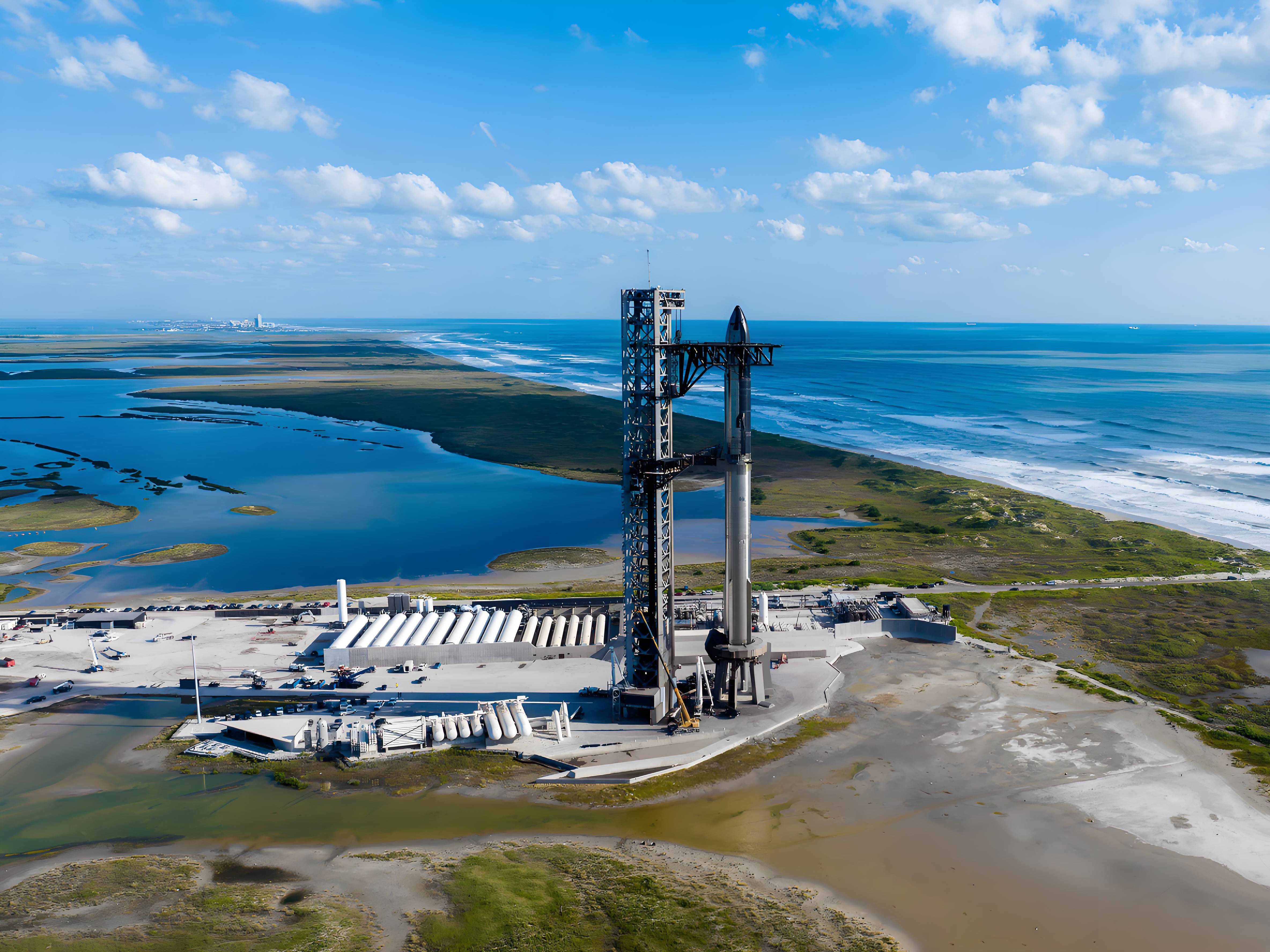
On August 24 at 7:30 PM ET, SpaceX's Starship super heavy-lift rocket will conduct its tenth integrated test flight from the Starbase facility in Texas. This marks the fourth test flight of the Starship this year, with the previous three failing to fully achieve mission objectives due to upper-stage rocket malfunctions, making this upcoming test highly anticipated.
Starship stands as the largest and most powerful launch vehicle ever constructed by humanity, boasting an impressive height of 394 feet. Composed of the Super Heavy booster and the Starship spacecraft, both featuring stainless steel structures, the entire rocket system is designed for full reusability. For this test flight, the Booster 16 and Ship 37 will take center stage, both representing the Block 2 improved models.
A series of key test objectives have been set for this flight. After liftoff, the upper and lower stages will separate. The upper stage of the Starship is scheduled to deploy 8 Starlink satellite mass simulators in space to test its satellite deployment capabilities. Meanwhile, an attempt will be made to restart the Raptor engine in space, a crucial step in verifying engine reliability for future interstellar voyages. Additionally, the upper stage of the Starship is planned to make a controlled splashdown in the Indian Ocean, while the lower stage Booster 16 will undergo a controlled landing in the Gulf of Mexico to gather key data for recovery technology.
To ensure the success of this test flight, SpaceX has made several technical improvements based on issues exposed in previous flights. During the landing phase, SpaceX will adopt a unique configuration where "1 out of 3 central engines is intentionally shut down" to test whether the backup engine can complete the landing retrothrust, thereby enhancing landing reliability. In the upper stage of the Starship, engineers have removed some heat shield tiles and are testing a new metal heat protection scheme to evaluate re-entry limit performance. This improvement addresses the problem of methane leakage and attitude control loss caused by the rupture of the top dome's self-pressurization diffuser during the ninth test flight. Furthermore, SpaceX will install and test a functional capture interface for the first time, laying the technical groundwork for future "chopstick" mechanical capture and recovery.
The Starship program has already completed 9 test flights, achieving several partial breakthroughs, including the recovery and refurbishment of the Super Heavy booster using the "Mechazilla" robotic arm. However, a full closed-loop process from launch to recovery has yet to be realized. In the ninth flight on May 27 this year, the upper-stage rocket disintegrated 45 minutes after liftoff. On June 18, Ship 36, originally intended for the tenth test flight, suffered a severe explosion during a ground static fire test. These incidents have posed significant challenges to the Starship's development. Nevertheless, with its spirit of rapid iteration and courage to experiment, SpaceX quickly identified potential failure causes and implemented improvements and repairs.
The success or failure of Flight 10 will directly impact SpaceX's overall progress in advancing crewed lunar and Mars exploration. Starship is not only crucial to SpaceX's dream of Mars colonization but also an important part of NASA's Artemis program. According to plans, Starship will serve as the lunar lander in the Artemis III mission in 2027, transporting astronauts to the lunar surface. A successful test flight this time will lay a solid foundation for subsequent crewed space missions and further drive humanity's progress in exploring the universe.
While preparing for the tenth flight, SpaceX has announced key innovations for the next-generation Block 3 Starship. Its fully revamped grid fin design features a 50% increase in area compared to previous generations, a more robust structure, and a reduction in number from four to three. These improvements will allow the booster to return to Earth at a higher angle of attack, significantly reducing aerodynamic drag and saving propellant. Founder Elon Musk stated that this design could potentially double the Starship's payload capacity.
In conclusion, SpaceX's tenth integrated test flight of the Starship is a crucial experiment. It not only represents a major test of SpaceX's technical capabilities but also stands as an important milestone in humanity's journey of exploring the universe. Regardless of the outcome of this test flight, SpaceX will gain valuable experience, laying a more solid foundation for future interstellar exploration. Let's collectively look forward to the Starship's remarkable performance on August 24 and witness humanity take an important step deeper into the cosmos.

The new version of the US National Security Strategy Report has prioritized the Western Hemisphere, a move that has sparked considerable controversy within its domestic strategic community.
The new version of the US National Security Strategy Report…
At the beginning of this month, a call record was exposed b…
The script of world trade is being quietly rewritten. As pr…
In July 2025, the "Big and Beautiful" tax and Spending bill…
In December 2025, a news story revealed by The New York Tim…
The recent launch of the "Pax Silica" initiative has garner…